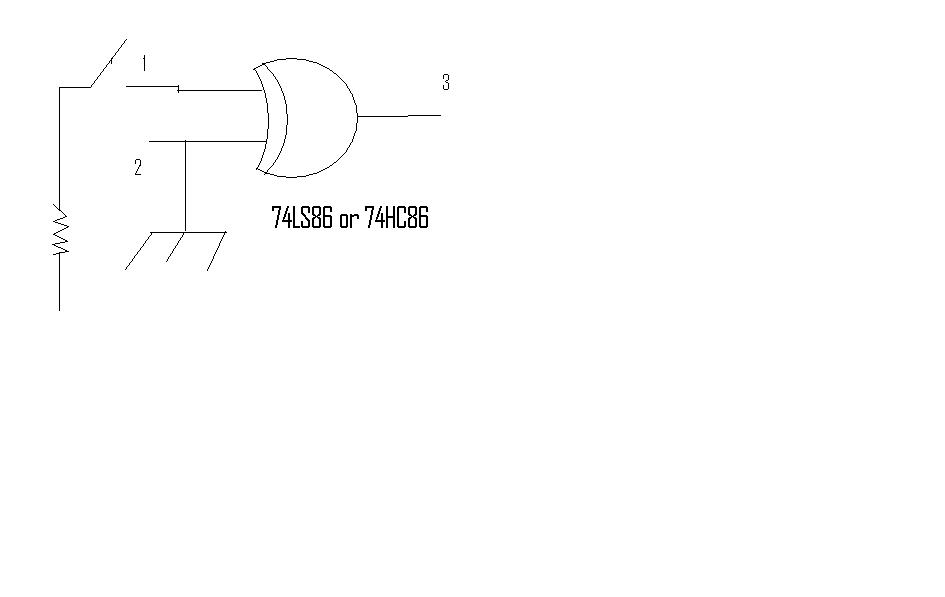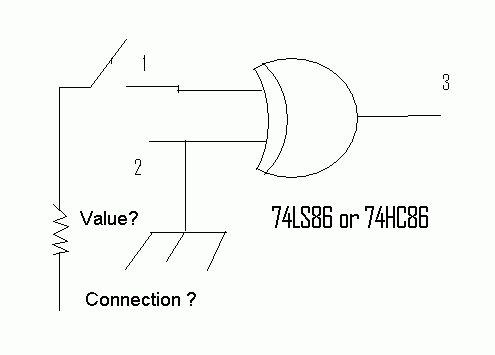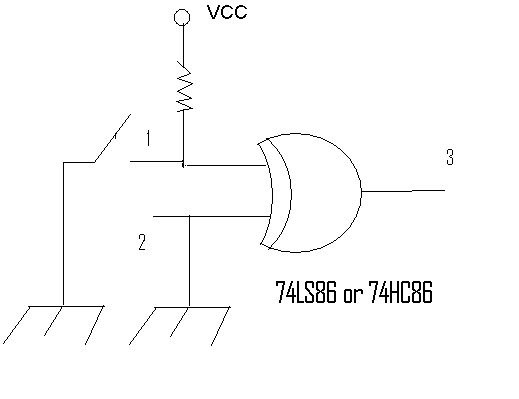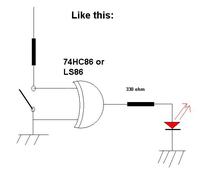huys cobb
Member level 3
Hai
AFter test this circuit:

the result between the 74ls86 and 74hc86 very different..
each time I press the button..the 74LS86 didn't change the status ouput while the 74hc86 basically from botton input..
the all of 74LS86s was new.
[/img]
AFter test this circuit:

the result between the 74ls86 and 74hc86 very different..
each time I press the button..the 74LS86 didn't change the status ouput while the 74hc86 basically from botton input..
the all of 74LS86s was new.
[/img]


